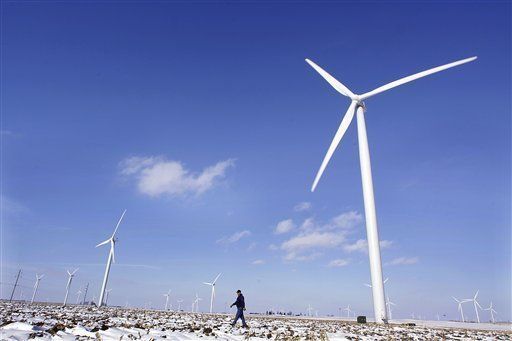

The US Energy Information Agency (EIA) recently released estimates for US electricity consumption in October and November of last year. And the numbers have big climate implications. Electricity consumption is down dramatically in the fourth quarter, helping greenhouse gas emissions fall as much as 3+% in 2008.
As I've shared from other EIA reports, oil consumption (our nation's biggest source of carbon emissions) is estimated to have fallen ~5.6% in 2008. But US electric generation and consumption shifts are also doing their part to lower emissions.
There is a slight shift from coal to less carbon-intensive fuels to generate electricity -- such as natural gas and wind power (which has grown ~38% in 2008 through November). Thus, coal combustion (our second biggest source of emissions) has declined during the past year. Electricity generation makes up ~93% of coal demand, so it is fair to say that the .6% drop in coal demand for electricity will translate into a nearly equivalent overall drop in coal use and its emissions.
And natural gas use for electricity fell sharply in 2008. Through November, consumption was down ~7%. Electricity use makes up ~38% of US natural gas demand so overall numbers necessitate looking at industrial, commercial, and residential consumption (with their market share of ~36%, 12%, and 14%) to get the overall picture. Rough estimates put overall natural gas demand down ~1.5% since industrial, commercial and residential use has increased from 2007 levels through November. December demand levels will be very interesting to see, getting a better measure of the effect of manufacturing shutdowns and curtailments.
Adding the consumption declines of ~5.6% for oil, ~.6% for coal, and ~1.5% for natural gas together, the carbon dioxide emissions drop more than 3% in 2008. We have yet to see how December data change the total, but it is clear that annual emissions took a dive. This means that the 1990 GHG emissions level is attainable in the short-term (as early as the end of a potential second Obama term) -- before the proposed federal legislation to achieve it by 2020.
A focus on green jobs (both efficiency and renewables) in the stimulus package can keep emissions on a downward trajectory throughout the next several years and provide ancillary benefits of cleaner air, a more secure energy supply, and lower energy costs. Let's make it happen!
Onwards in the Sustainable Energy Transition-